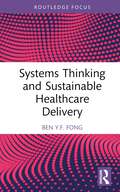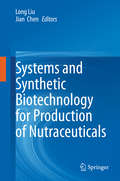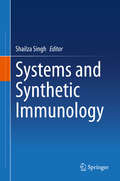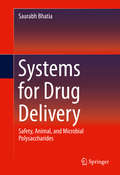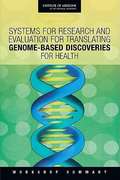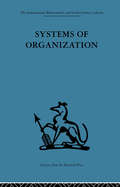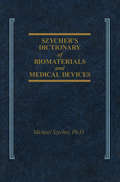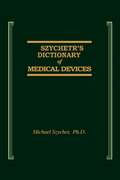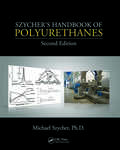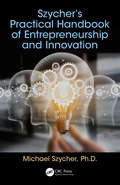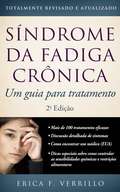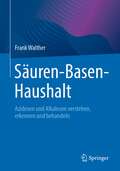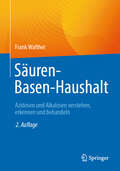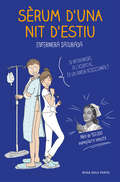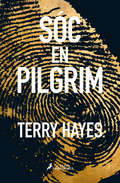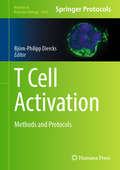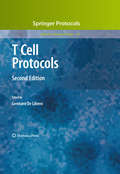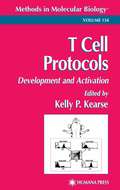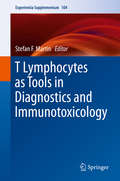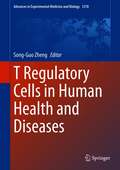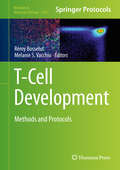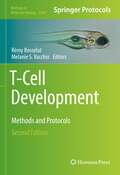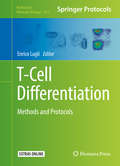- Table View
- List View
Systems Thinking and Sustainable Healthcare Delivery (Routledge Focus on Business and Management)
by Ben Y.F. FongThe Sustainable Development Goal 3 seeks to ensure health and well-being for all at every stage of life. This book discusses how to strengthen our healthcare systems and ensure sustainable community healthcare delivery by using systems thinking, an approach to understanding complex interactions of individual system elements in nature. Financing and manpower planning are integral processes to achieve health for all in the world. Adopting the Framework for Action of the World Health Organization for Strengthening Health Systems to Improve Health Outcomes, this book reviews and discusses, illustrated by case examples, the building blocks of healthcare systems, namely financing, human resources, management strategies and leadership and governance in the context of accessibility, coverage, quality and safety of community health services to achieve selected targets in SDG 3 in the context of global health. This book will be of interest to those who are researching sustainable healthcare systems, as well as policymakers and healthcare professionals.
Systems and Synthetic Biotechnology for Production of Nutraceuticals
by Jian Chen Long LiuThis book discusses systems and synthetic biotechnologies for the production of nutraceuticals, and summarizes recent advances in nutraceutical research in terms of the physiological effects on health, potential applications, drawbacks of traditional production processes, characteristics of production strains, and advances in microbial production based on systems and synthetic biotechnology. It also examines future directions in the microbial production of nutraceuticals using systems and synthetic biology. The book is intended for researchers and graduate students in the field of molecular biology and industrial biotechnology as well as staff working in the nutraceutical industry.
Systems and Synthetic Immunology
by Shailza SinghSystems and Synthetic Immunology focuses on the similarities between biology and engineering at the systems level, which are important for applying engineering theories to biology problems. With the advent of new genomic techniques, there are numerous systematic investigations underway in the scientific world. This volume highlights techniques that can be used to effectively combine two of the most essential biological fields - Systems Biology and Synthetic Immunology.The respective chapters discuss the role of synthetic immunology in biotechnology, production of biomaterials, and their use in vaccine delivery. Further topics include the importance of cytokines; the use of genomic engineering tools in immunotherapy; immunosensors; nanotherapeutics; and bioinformatics tools in biomedical applications. Given its scope, the book offers readers an up-to-date and comprehensive review of this unique and dynamic field of research.
Systems for Drug Delivery
by Saurabh BhatiaThis book details current developments in all natural polymers, with a focus on animal and microbial polysaccharides. The book examines, compares, and contrasts the efficiency of plant and algae based natural polymers in inducing immune reactions. Additionally, the book details the safety and toxicity profiles with respective regulations.
Systems for Research and Evaluation for Translating Genome-Based Discoveries for Health: Workshop Summary
by Institute of Medicine of the National AcademiesWith the advent of genome-wide association studies, numerous associations between specific gene loci and complex diseases have been identified--for breast cancer, coronary artery disease, and asthma, for example. This rapidly advancing field of genomics has stirred great interest in "personalized" health care from both the public and private sectors. The hope is that using genomic information in clinical care will lead to reduced health care costs and improved health outcomes as therapies are tailored to the genetic susceptibilities of patients. A variety of genetically based health care innovations have already reached the marketplace, but information about the clinical use of these treatments and diagnostics is limited. Currently data do not provide information about how a genomic test impacts clinical care and patient health outcomes--other approaches are needed to garner such information. This volume summarizes a workshop to address central questions related to the development of systems to evaluate clinical use of health care innovations that stem from genome-based research: What are the practical realities of creating such systems? What different models could be used? What are the strengths and weaknesses of each model? How effectively can such systems address questions about health outcomes?
Systems of Organization: The control of task and sentient boundaries
by A K Rice E J MillerTavistock Press was established as a co-operative venture between the Tavistock Institute and Routledge & Kegan Paul (RKP) in the 1950s to produce a series of major contributions across the social sciences. This volume is part of a 2001 reissue of a selection of those important works which have since gone out of print, or are difficult to locate. Published by Routledge, 112 volumes in total are being brought together under the name The International Behavioural and Social Sciences Library: Classics from the Tavistock Press. Reproduced here in facsimile, this volume was originally published in 1967 and is available individually. The collection is also available in a number of themed mini-sets of between 5 and 13 volumes, or as a complete collection.
Szycher's Dictionary of Biomaterials and Medical Devices
by Michael SzycherThis dictionary contains thousands of definitions from various related disciplines and minimizes the need for several dictionaries. The book defines everything from AAMI (Association for the Advancement of Medical Instrumentation) to zymogen (proenzyme). The editor, an internationally recognized expert in the area of biomaterials, has combined knowledge from the fields of medicine, pharmacology, physiology, polymer chemistry, biochemistry, metallurgy, and organic chemistry.
Szycher's Dictionary of Medical Devices
by Michael SzycherFROM THE PREFACEThe field of medical devices represents one of the most advanced technological areas in the United States. In 1991, over 12 million Americans had at least one medical device; fixation devices had the highest incidence, followed by contact lens use and lens implants and, lastly, artificial joints. The public has come to expect that medical devices will alleviate maladies and/or conditions that were not treatable fifty years ago. It is hard to believe that the first pacemaker was invented in the 1950s, the first artificial heart valve in 1952, and the first artificial hip replacement was performed in 1954. In 1992, the medical device industry exported a total of $6.9 billion, while the country imported a total of $3.9 billion, representing a $3.0 billion trade surplus. Medical devices are among the most regulated products in the world. The FDA maintains a constant vigil over medical device manufacturers and importers; even medical device definitions are subject to official scrutiny. Title 21 of the Code of Federal Regulations publishes these definitions, but the definitions are spread over several medical specialty areas and are, thus, difficult to find. This book attempts to bring a measure of order by providing an alphabetical listing of officially defined devices.
Szycher's Handbook of Polyurethanes
by Michael SzycherA practical handbook rather than merely a chemistry reference, Szycher's Handbook of Polyurethanes, Second Edition offers an easy-to-follow compilation of crucial new information on polyurethane technology, which is irreplaceable in a wide range of applications. This new edition of a bestseller is an invaluable reference for technologists, marketer
Szycher’s Practical Handbook of Entrepreneurship and Innovation
by Michael SzycherThis practical and comprehensive handbook offers step-by-step instruction, guiding entrepreneurs of innovative technology startups all the way from idea to profitability. With its easy-to-follow format aimed at both experienced as well as novice entrepreneurs, this book covers all technical, financial, legal, and governmental hurdles facing startups. It discusses common causes of business failure and points out the pitfalls to avoid in getting innovative technology successfully to market.
SÍNDROME DA FADIGA CRÔNICA: UM GUIA DE TRATAMENTO, SEGUNDA EDIÇÃO
by Erica Verrillo Sueli ZardoEssas informações exclusivas – agora completamente revisadas e atualizadas – incluem mais de 100 tratamentos eficazes, desde antivirais até vitaminas, bem como locais de especialistas e clínicas, informações para comprar pela Internet e organizações nacionais, locais e internacionais sobre a SFC/EM. Seções novas e ampliadas incluem protocolos e pesquisas de médicos sobre as causas e mecanismos da doença, todos escritos em linguagem concisa e fácil de entender. Cada aspecto da doença é examinado detalhadamente, do diagnóstico a uma discussão profunda dos sintomas, de terapias tradicionais à alternativas até estratégias essenciais para lidar com a doença. A nova edição contém capítulos para pessoas lidando com sensibilidades a vários produtos químicos e restrições alimentares, bem como uma seção ampliada sobre crianças e adolescentes com a SFC/EM. Síndrome da Fadiga Crônica: Um Guia de Tratamento, segunda edição, ainda é o guia de referência mais completo sobre essa doença.
Säuren-Basen-Haushalt: Azidosen und Alkalosen verstehen, erkennen und behandeln
by Frank WaltherDieses Buch beinhaltet Grundlagen, Diagnostik und Therapie von Störungen des Säuren-Basen-Haushalts.Wer sich dafür interessiert, wie eine diabetische Ketoazidose entsteht, wie man sie behandelt, welchen Stellenwert die Therapie mit Puffersubstanzen bei Störungen des Säuren-Basen-Haushaltes hat, wie sich eine Hypothermie auf den Säuren-Basen-Haushalt auswirkt, was eine posthyperkapnische Alkalose ist, oder wer wissen möchte, wodurch sich BE- und Standardbikarbonat-Wert im Säuren-Basen-Status unterscheiden, findet die Erklärungen und Grundlagen dafür und noch etliches mehr in diesem Buch. Neben Kapiteln, die sich mit den weitgehend unveränderlichen Grundlagen und Grundsätzen der therapeutischen Möglichkeiten beschäftigen bzw. für Bereiche mit noch unzureichender Evidenzgrundlage die aktuell führenden Expertenmeinungen wiedergeben, werden zur Veranschaulichung 12 klinische Fälle präsentiert, an deren Beispiel die diagnostische Vorgehensweise bei unterschiedlichen Säuren-Basen-Störungen und die klinischen bzw. therapeutischen Schlussfolgerungen erläutert werden. Ziel des Buches ist die Vermittlung von fundiertem und doch praxisrelevanten, am Krankenbett einsetzbaren Wissen auf der Grundlage des Wissens aus der Biochemie und Physiologie-Ausbildung des Physikums. Es wendet sich an Ärztinnen und Ärzte verschiedener Facharztausbildungen sowie Medizinstudentinnen und -studenten.
Säuren-Basen-Haushalt: Azidosen und Alkalosen verstehen, erkennen und behandeln
by Frank WaltherDieses Buch beinhaltet Grundlagen, Diagnostik und Therapie von Störungen des Säuren-Basen-Haushalts. Wer sich dafür interessiert, wie eine diabetische Ketoazidose entsteht, wie man sie behandelt, welchen Stellenwert die Therapie mit Puffersubstanzen bei Störungen des Säuren-Basen-Haushaltes hat, wie sich eine Hypothermie auf den Säuren-Basen-Haushalt auswirkt, was eine posthyperkapnische Alkalose ist, oder wer wissen möchte, wodurch sich BE- und Standardbikarbonat-Wert im Säuren-Basen-Status unterscheiden, findet die Erklärungen und Grundlagen dafür und noch etliches mehr in diesem Buch. Neben Kapiteln, die sich mit den weitgehend unveränderlichen Grundlagen und Grundsätzen der therapeutischen Möglichkeiten beschäftigen bzw. für Bereiche mit noch unzureichender Evidenzgrundlage die aktuell führenden Expertenmeinungen wiedergeben, werden zur Veranschaulichung 12 klinische Fälle präsentiert, an deren Beispiel die diagnostische Vorgehensweise bei unterschiedlichen Säuren-Basen-Störungen und die klinischen bzw. therapeutischen Schlussfolgerungen erläutert werden. Ziel des Buches ist die Vermittlung von fundiertem und praxisrelevanten, am Krankenbett einsetzbaren Wissen auf der Grundlage des Wissens aus der Biochemie und Physiologie-Ausbildung des Physikums. Es wendet sich an Ärztinnen und Ärzte verschiedener Facharztausbildungen sowie Medizinstudentinnen und -studenten. In der 2. Auflage wurde das Buch sorgfältig überarbeitet und aktualisiert und um neue Informationen ergänzt, z. B. zum Kalzium-Phosphat-Haushalt und zur 2022 erschienenen neuen Leitlinie für die Behandlung der diabetischen Ketoazidose im Kindesalter.
Sèrum d'una nit d'estiu
by Enfermera SaturadaLa Satu, la Enfermera Saturada, la Florence Nightingale de les xarxes socials, torna a la càrrega amb un llibre més il·lustrat i acolorit que mai. Haurà aconseguit la plaça fixa? Haurà trobat l'amor? O, millor encara..., tindrà ja el seu propi armariet? Cansada dels torns de nit que no s'acaben mai? La teva supervisora no col·labora en el pot de cafè i, a sobre, esmorza dues vegades? No suportes aquella companya que s'amaga al lavabo quan sona el timbre del pacient aïllat? La teva tutora et demana que prenguis la pressió amb l'aparell de l'any de la picor? No pateixis més! La Florence Nightingale de les xarxes socials ha tornat a posar-se el pijama! Aquest llibre no farà que deixis de fer torns de nit, però si més no farà que els facis amb un gran somriure. Benvinguda al nou món de la infermeria amb humor!Benvinguda al món de la Enfermera Saturada! ------- Piràmide de Maslow dels pacients ingressatsTinc visió?Em molesta la via.Conec una infermera que treballa en aquest hospital (és baixeta, morena...).Em sembla que hi ha aire al sèrum.Fa quatres dies que no cago (i me'n recordo a les 4.00 de la matinada.). Piràmide de Maslow dels acompanyants/visitesLa meva mare fa quatre dies que no caga.Com funciona la tele?En aquesta planta, hi ha el Pep, de la Lucita? El van ingressar ahir.Es que no penseu portar-li res per menjar?A quina hora passa el metge? ------- Opinions:«Un llibre molt bo.»Paco. 74. S'arrenca la via i diu que se li ha caigut. «Jo vinc a l'hospital a veure si m'hi trobo la Enfermera Saturada.»Rosa. 37. Ve a Urgències perquè té vòmits i pregunta si pot menjar alguna cosa. «Aquesta infermera és una crac. Miri, miri quin sèrum m'ha posat, ni una bombolla d'aire!»María Luisa. 56. Viu amb la por que una bombolla li prengui la vida. «M'he rigut tant amb aquest llibre que se m'han escapat unes gotetes.»Carmen. 94. Més anys que saturació d'oxigen.
Sóc en Pilgrim
by Terry HayesUna novel·la trepidant amb una acció imparable. Aquesta és la història d'una cursa trepidant contra el temps i, sobretot, contra un enemic sofisticat i implacable. En una plaça pública de l'Aràbia Saudita, un home és executat sota un sol de justícia mentre un noi de catorze anys ho observa impotent entre la multitud: és el seu fill. En un lúgubre motel de Manhattan apareix el cos sense vida d'una dona jove, però tots els indicis per identificar-la han estat esborrats minuciosament. En un abocador de Damasc troben el cadàver d'un destacat expert en biotecnologia sirià amb senyals evidents de tortura. En una remota regió de l'Afganistan, el descobriment d'una substància bacteriológica letal en els cossos d'uns cooperants internacionals desferma l'alarma. Una línia invisible connecta tots aquests fets i traça un pla perfecte per cometre uncrim monstruós contra la humanitat. L'única persona capaç d'impedir-ho és un antic agent que fuig del seu passat i que ha esborrat la seva identitat real. Ara només respon al nom de Pilgrim, el pelegrí. La crítica ha dit...«L'únic thriller que heu de llegir aquest any. Per una vegada, la pura veritat.»The Guardian «Sóc en Pilgrim és, senzillament, una de les millors novel·les de suspens que he llegit en molt de temps.»David Baldacci «Podria ser la millor novel·la d'espies de tota una generació.»Roger Hobbs «Un relat ambiciós, d'un suspens inesgotable, que deixa sense alè.»The New York Times «Un trencaclosques geopolític de realisme notable. Terry Hayes retrata el món en tota la seva complexitat i aconsegueix que la trama avanci a un ritme vertiginós.»Lire «Un thriller excepcional.»Publishers Weekly «Lectors, que no us inquieti el volum del llibre. L'argument és impecable i passareu les pàgines a tota velocitat. No podreu parar de llegir.»Booklist «Un thriller del segle XXI: un argument sofisticat amb protagonistes perfectament caracteritzats [...]. Un llibre ambiciós i molt satisfactori, escrit amb talent i vitalitat.»The Times of London
T Cell Activation: Methods and Protocols (Methods in Molecular Biology #2904)
by Björn-Philipp DiercksThis volume provides detailed, up-to-date methods used in basic and applied research on T-cell activation. Chapters explore the fundamentals in T-cell biology a board range cutting-edge techniques from initial Ca2+ live-cell imaging to downstream effector functions in autoimmune disease. Written in the format of the highly successful Methods in Molecular Biology series, each chapter includes an introduction to the topic, lists necessary materials and reagents, includes tips on troubleshooting and known pitfalls, and step-by-step, readily reproducible protocols. Authoritative and cutting-edge, T- cell activation: Methods and Protocols will be an indispensable protocol collection for researchers studying T-cell activation in inflammation and immunity.
T Cell Protocols
by Gennaro De LiberoWith a wide variety of investigative approaches, T cell immunology is a vital and open field of study. In T Cell Protocols, Second Edition, an international panel of experts contribute fully updated classic protocols as well as newly established novel techniques for the study of T lymphocyte biology. Written in the highly successful Methods in Molecular BiologyTM series format, the chapters in this volume provide brief introductions to the topics, lists of the necessary materials and reagents, step-by-step, readily reproducible laboratory protocols, and Notes sections which collect expert tips on troubleshooting and avoiding known pitfalls. Up-to-date and easy to use, T Cell Protocols, Second Edition is an ideal guide for young investigators new to the complex field of immunology as well as a valuable, concise resource for experienced scientists searching for clear, efficacious descriptions of novel methods.
T Cell Protocols
by Kelly P. KearseKelly P. Kearse and a panel of laboratory experts describe the step-by-step execution of a wide variety of basic and specialized techniques for the study of T cell developmental biology and of their subsequent activation. Readily reproducible, the techniques are explained concisely, but in such detail that they are suitable for both the novice and experienced investigator. Coverage includes treatment of both fundamental and novel experimental protocols for the analysis of the role T cells play in immune function and in the prevention and cure of human diseases. Practical and timely, T Cell Protocols: Development and Activation offers basic scientists and clinical investigators a valuable compendium of key protocols that will improve skills with existing methods, as well as afford rapid mastery of powerful new techniques.
T Helper Cell Differentiation and Their Function
by Bing SunThis book will focus on the differentiation and regulation of subsets of CD4+ T cells. It will also cover other aspects of research on these cells, which has made great advances in recent years, such as subsets' plasticity and their role in healthy and disease conditions. The book provides researchers and graduate students with a cutting-edge and comprehensive overview of essential research on CD4+ T cells.
T Lymphocytes as Tools in Diagnostics and Immunotoxicology
by Stefan F. MartinThis book summarizes the state-of-the art in the development of T cell-based in vitro assays, which offer useful tools for hazard identification, risk assessment and improvement of diagnostics. It will be of interest to scientists, the chemical and pharmaceutical industry, and regulators involved in the replacement of animal testing methods. The identification of hazardous chemicals and drugs is essential to ensuring human health. The ban on animal testing for the cosmetics industry since 2009 and international efforts to reduce and replace animal testing in research and immunotoxicology call for alternative in vitro methods. The most specific immune response to chemicals and drugs that cause allergic contact dermatitis, respiratory disease and adverse drug reactions is the highly antigen-specific T lymphocyte response. Therefore the use of T cells as tools for identifying contact allergens and drugs that may cause health problems is of great interest.
T Regulatory Cells in Human Health and Diseases (Advances in Experimental Medicine and Biology #1278)
by Song-Guo ZhengThis book addresses one of the major challenges of immunology today that is being directed to the translation of the rapidly emerging volume of basic science contributions of immunology to clinical medicine. In so doing, the book systemically introduces and discusses concepts, classifications, phenotypic and functional descriptions of regulatory T (Treg) cells in health and disease. The authors of the 15 chapters were selected from among the most qualified experts in the field of Treg cell research who provide a comprehensive overview of Treg cells and their biology in the ensuing chapters.The beginning chapters provide a useful contemporary classification of Treg cell populations and then progress to chapters that explore basic mechanisms of Treg cell function and epigenetic control. In addition to descriptions of typical CD4+ Foxp3+ cells, other chapters provide detailed presentations of Treg subsets such as CD8+ Tregs and IL-10-producing Tr1 cells. The differences of various Treg subsets, as well as circulating and resident Treg cell populations, are next compared. Importantly, the next chapters provide the clinical correlation of Treg cells with autoimmune diseases, inflammatory diseases, metabolic diseases, cancer and organ transplantation and progress to chapters that highlight emerging innovative technology including nanoparticle-Treg cells and their translational values. In summary, the book will provide a valuable resource not only for graduate students and researchers in the fields of immunology, cell biology and translational medicine but also for all others interested in learning more about Treg cells and their application in human health and disease.
T follicular Helper Cells
by Marion Espéli Michelle LintermanThis volume brings together the skills and protocols of numerous laboratories that are at the heart of investigation into the biology of Tfh cells in both mice and humans. As a volume in the highly successful Methods in Molecular Biology series, chapters contain introductions to their respective topics, lists of the necessary materials and reagents, step-by-step, readily reproducible protocols, and tips on troubleshooting and avoiding known pitfalls. Concise and easy-to-use, T follicular Helper Cells: Methods and Protocols provides scientist with techniques and protocols that have facilitated breakthroughs in Tfh biology and to present them in a way that will enable both new and experienced researchers to continue to move this exciting field forward.
T-Cell Development
by Rémy Bosselut Melanie S. VacchioThis volume provides simple and accessible experiment protocols to explore thymus biology. T-Cell Development: Methods and Protocols is divided into three parts presenting short reviews on T cell development, analysis strategies, protocols for cell preparation, flow cytometry analyses, and multiple aspects of thymocyte biology. As a volume in the highly successful Methods in Molecular Biology series, chapters contain introductions to their respective topics, lists of the necessary materials and reagents, step-by-step, readily reproducible protocols, and tips on troubleshooting and avoiding known pitfalls. Concise and easy-to-use, T-Cell Development: Methods and Protocols aims to ensure successful results in the further study of this vital field.
T-Cell Development: Methods and Protocols (Methods in Molecular Biology #2580)
by Rémy Bosselut Melanie S. VacchioThis second edition volume provides new and updated chapters detailing simple and accessible experiment protocols to explore thymus biology. Chapters are divided into three parts presenting short reviews, analysis strategies, protocols for cell preparation, flow cytometry analyses, Innate Lymphoid Cells (ILC), mouse T-cell development, antigen receptor-less cousins of T cells, bone marrow chimeras, thymic stroma, and multiple aspects of thymocyte biology. Written in the successful Methods in Molecular Biology series format, chapters include introductions to their respective topics, lists of the necessary materials and reagents, step-by-step, readily reproducible protocols, and notes on troubleshooting and avoiding known pitfalls. Authoritative and cutting-edge, T-Cell Development: Methods and Protocols, Second Edition aims to be a useful practical guide to help readers overcome obstacles associated with experimental approaches of T-cell development.
T-Cell Differentiation
by Enrico LugliThis volume provides protocols to successfully apply cutting-edge technologies to characterize the biology of T cells at an unprecedented level of complexity. Chapters guide readers through flow cytometry and fluorescence-activated cell sorting, the behaviour of single T cells after adoptive cell transfer (ACT), single cell gene expression by multiplex PCR, lentiviral transduction approaches, protocols to derive large numbers of early-differentiated memory T cells by using dedicated cytokines cocktails, approaches to measure telomerase activity in terminally differentiated T cells, and approaches to define Treg cells at the phenotypic and functional level. The final part of the book is dedicated to the analysis of the differentiation and effector functions of innate T cells, namely the well-known γ/δ T cells, and the recently identified CD8+ mucosal associated invariant T (MAIT) cells. Written in the highly successful Methods in Molecular Biology series format, chapters include introductions to their respective topics, lists of the necessary materials and reagents, step-by-step, readily reproducible laboratory protocols, and tips on troubleshooting and avoiding known pitfalls. Authoritative and cutting-edge, T-Cell Differentiation: Methods and Protocols aims to provide protocols that are fundamental to monitor the T cell compartment at the level of single cells in pathological and immunotherapy conditions.
